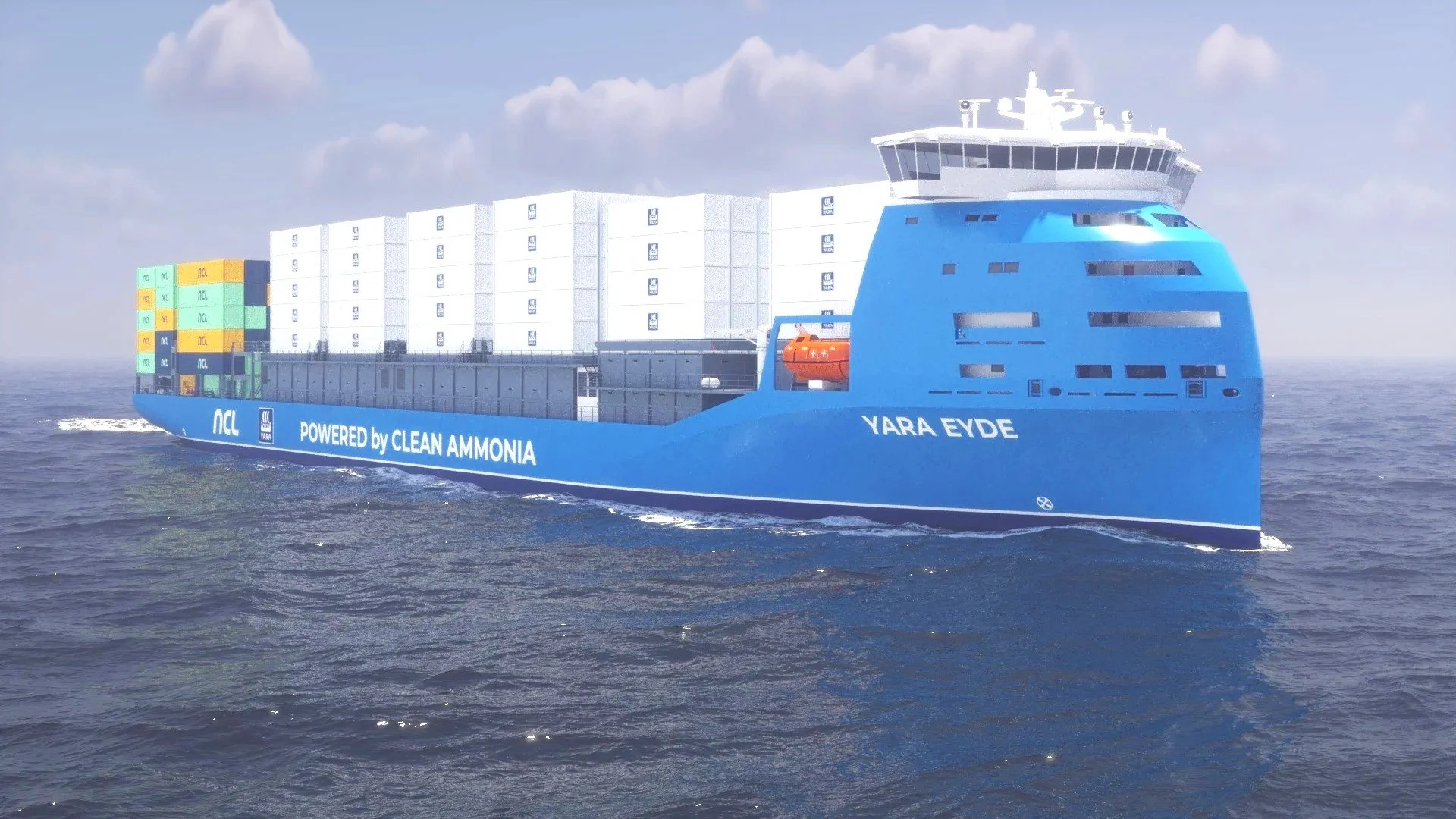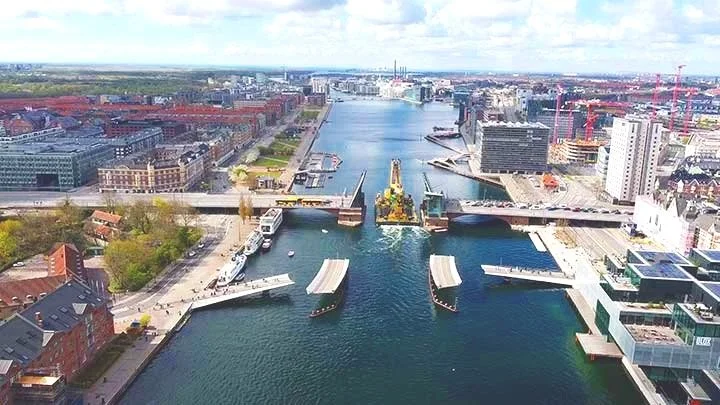Green Ammonia as a Shipping Fuel
Currently shipping is responsible for some 2.8% of global carbon emissions, well in excess of 1 Gt/y, a figure that’s growing with the sector’s inexorable expansion concomitant to rising volumes of traded goods. Ships burning high sulphur bunker fuels are also responsible for local pollution affecting health, soils and waters, and damaging buildings.
The switch to ships fuelled by Green ammonia will bring many benefits!
Visualisation: Yara Clean Ammonia, North Sea Container Line, and Yara International joined forces in 2023 to realize the world's first container ship that will use clean ammonia as fuel, to be named the Yara Eyde.
Credit: Yara.
Photo: Many ships designed to carry LPG, like this one, can already carry ammonia. Soon, they could be powered by ammonia as well. Credit: Cameron Venti on Unsplash.
Ammonia as a Shipping Fuel
Green ammonia is rapidly emerging as a shipping industry zero-carbon ‘fuel of choice’ that will enable it to meet targets to reduce carbon emissions in line with the 2015 Paris Agreement.
The 2023 IMO Strategy on Reduction of GHG Emissions from Ships specifies the target to achieve net zero emissions from the sector by 2020, with ambitious intermediate targets for 2030 and 2040. These include a 40% reduction in carbon intensity of international shipping by 2030, while striving for 10% of its energy to be emissions-free by 2030.
At present IMO there are no formal safety guidelines or regulations applying to the carriage and use of ammonia as a fuel for ships, under either its International Code of the Construction and Equipment of Ships Carrying Liquefied Gases in Bulk (IGC Code) or International Code of Safety for Ship Using Gases or Other Low-flashpoint Fuels (IGF Code).
However the IMO is keen to get such guidelines and regulations into place in response to demand from members and to assist the rapid decarbonisation of shipping.
Hence, “Taking into account the urgency of providing guidance to Administrations, shipowners and the industry at large on the safe use of hydrogen and ammonia as fuel, and in support of IMO's emission targets”, the IMO’s CCC (Carriage of Cargoes and Containers) Sub-committee accelerated the development of the necessary draft interim guidelines at its September 2023 meeting.
These guidelines are due to be finalised in September 2024, and to come into force on 1st January 2028.
Coming soon, Ammonia Ships
Two-stroke marine diesel engines can already be modified to burn ammonia, and a growing number of manufacturers are designing, testing and producing ‘ammonia-ready’ ship engines.
In what’s claimed to be the first commercial order for ammonia powered ships, joint venture Exmar LPG has ordered a pair of 46,000 tonne Gas Carriers from a South Korean shipyard for delivery in 2026.
Azane Fuel Solutions has also announced its plans for an ammonia powered gas tanker (see visualisation) in partnership with Amogy, intended to deliver Green ammonia fuel to ships.
Azane also plans to start building the world’s first ammonia bunkering network in 2024, expected to be ready for its first operations in 2025. Terminals will be able to receive ammonia fuel from ships, trucks and barges, in refrigerated or pressurised state, optimised for ammonia-fuelled ships. Both shore-based and floating solutions will be supported.
In another development, Yara Clean Ammonia, North Sea Container Line, and Yara International joined forces in 2023 to realize the world's first container ship (see visualisation) that will use clean ammonia as fuel, to be named the Yara Eyde.
German engine builder MAN Energy Solutions aims to have a two-stroke ammonia engine for large-scale container ships available in 2024 (see photo) and a retrofit package to make existing ships capable of running on ammonia by 2025.
The company’s Head of R&D Two-Stroke Businesses, Brian Østergaard Sørensen, says one of the key challenges is the prevention of NOx emissions from combustion. “But the issue can be solved. We’re already working on a number of options to develop the most efficient solution.”
Some 20 million tonnes of ammonia are currently shipped each year, with around 40 vessels dedicated to the task. Many more ships could be used for ammonia including those now employed in transporting LPG, while new gas carriers, including Very Large Gas Carriers, are often built ‘ammonia ready’ in anticipation of the growth in trade.
Visualisation: Azane, partnering with Amogy, are to build an ammonia-powered gas tanker. Azane also plans to build ammonia bunkering terminals. Credit: Azane Fuel Solutions.
Photo: A two-stroke engine on its way to be adapted for ammonia fuel at the MAN Energy Solutions’ Research Center in Copenhagen. Credit: MAN Energy Solutions.
Photo: Fishing boats are responsible for 0.5-1% of world carbon emisssions - and they too could switch to Green ammonia fuel. Credit: Garry Knight via Flickr, CC-BY 2.0.





